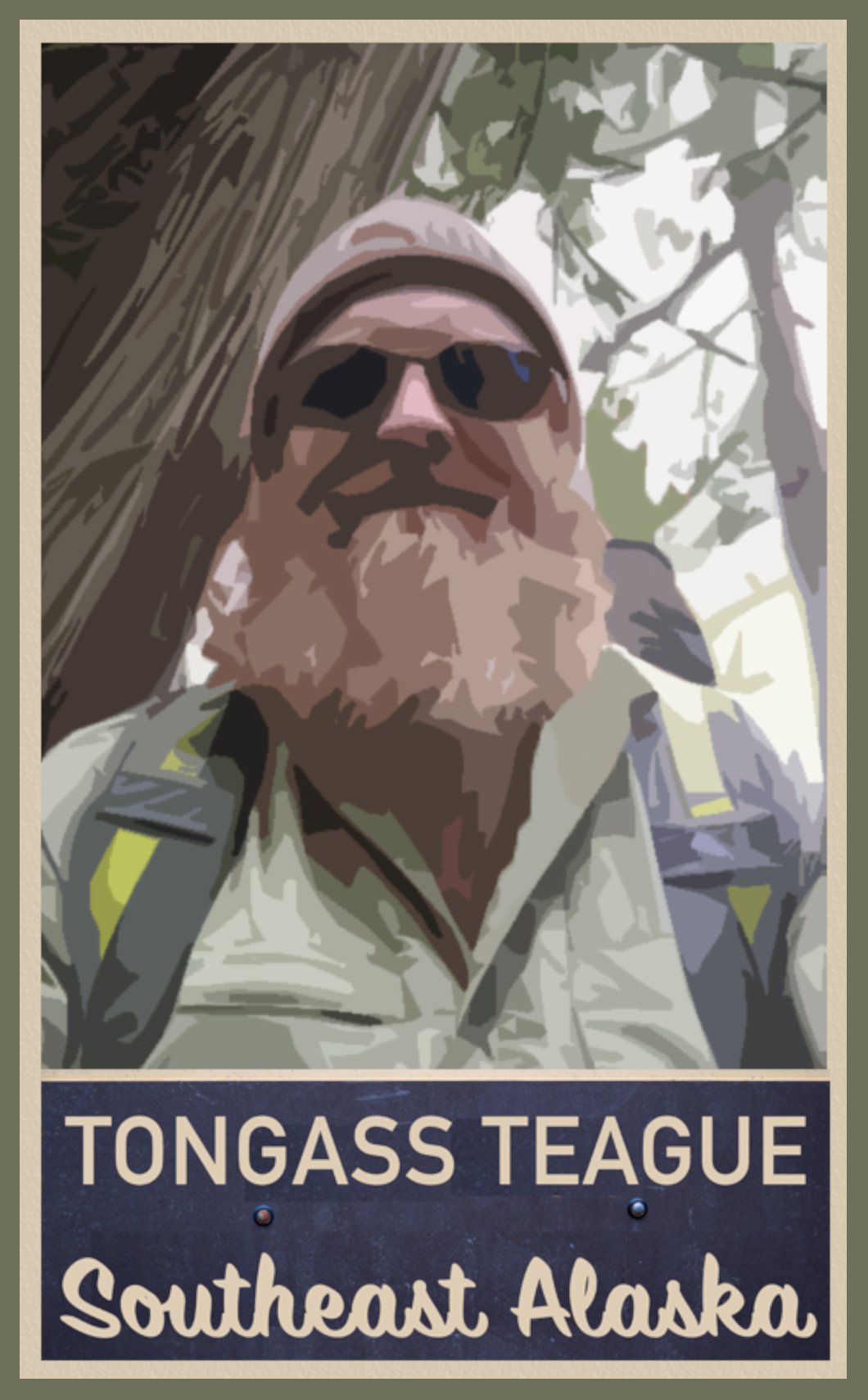More About The Bear Necessities
When people think about Alaska, many immediately think of the legendary and iconic grizzly bear—that humpbacked, massively clawed and fanged predator that can weigh over a thousand pounds and that may just decide to ignore, toy, or eat you—the stuff of nightmares that rarely but sometimes come true. Fortunately, here on the trails accessed by the Ketchikan road system, we don’t have grizzly or brown bears (well-salmon-fed grizzlies who are much larger than the interior grizzlies). Grizzlies are just right around the corner though and can be found on the mainland behind our island and in many of the communities north of here. As a result of our abundant resources like berries and salmon, our black bears are generally well fed on their own and don’t take much of an interest in people. They will, however, get into residents’ unsecured trash cans outside or food left out by careless campers. I found this out one of the first weeks living here. I placed my full trash can on my deck and then woke up in the middle of the night to the sound of my trash can being tossed off the deck and dragged into the woods. When I cleaned up the mess in the morning, I found fang punctures in the plastic lid and trash strewn throughout the undergrowth. Ever since, the trash can has been stowed in my house’s crawl space and no more problems. So, when camping and hiking, always be mindful of securing your food and trash properly either in a bear box at a campground, a bear canister, or hanging a pack in a tree. But of all the trail running and hiking I’ve done over the years here, I haven’t once run into a bear. But that doesn’t mean they aren’t around.
Mind you, I’ve never been attacked by a bear, but if you run into an obstinate bear in close quarters and she’s not backing off; Stop. Spread out your arms and make yourself seem bigger. Slowly back away and calmly talk to the bear. If the bear charges, don’t run. You can’t out run a bear and you can’t out-climb one in a tree either. Unfortunately, you are left to hold your ground. Often when a black bear charges, it can be a bluff charge where it pulls up short of attacking you. If it’s not a bluff charge, then that’s the time to use your bear spray. If a rare situation like this is going to occur, it’ll probably happen in a matter of seconds, so you’ll want to be hiking with the bear spray in your hand or right on your pack strap so you can immediately react. If you are attacked, try to protect your front side, i.e. curl up into a ball and cover your head with your hands, and fight back with any object that you can and pray that the bear loses interest. When I trail run by myself, I only carried a small hand-held canister of bear spray just in case that I might be mistaken as running prey. But even then, I didn’t have any problems. There haven’t been any bear attacks in the Ketchikan area that I have heard of. Most wilderness places I’ve hiked in the States and Canada, the bears are running away as soon as they get wind of someone. Basically, the bears just don’t want to be bothered, so take it seriously when you see one and give it a wide berth, especially sows with cubs. If they are obstructing the trail and not moving, turn around and hike the trail another day.

